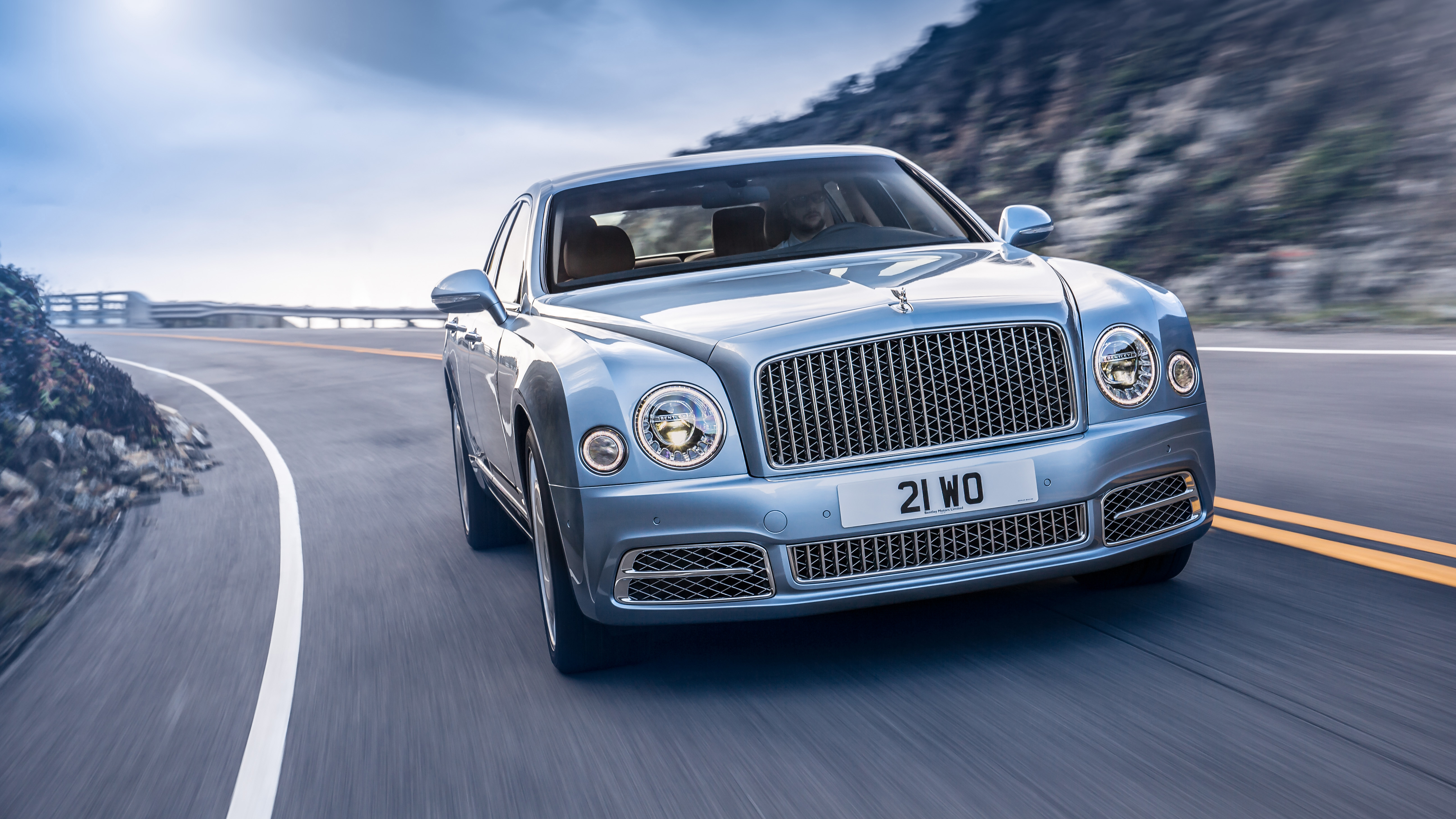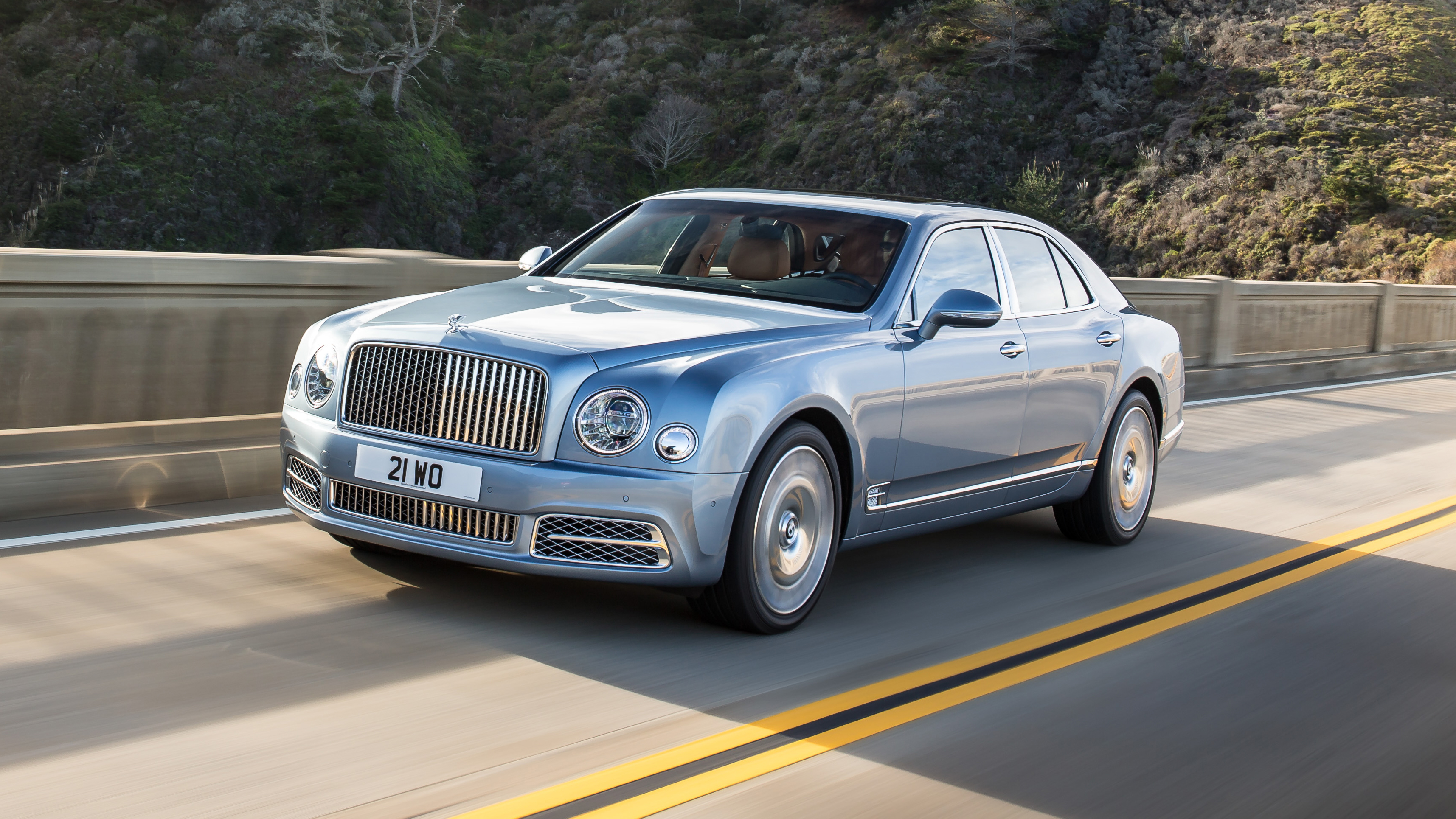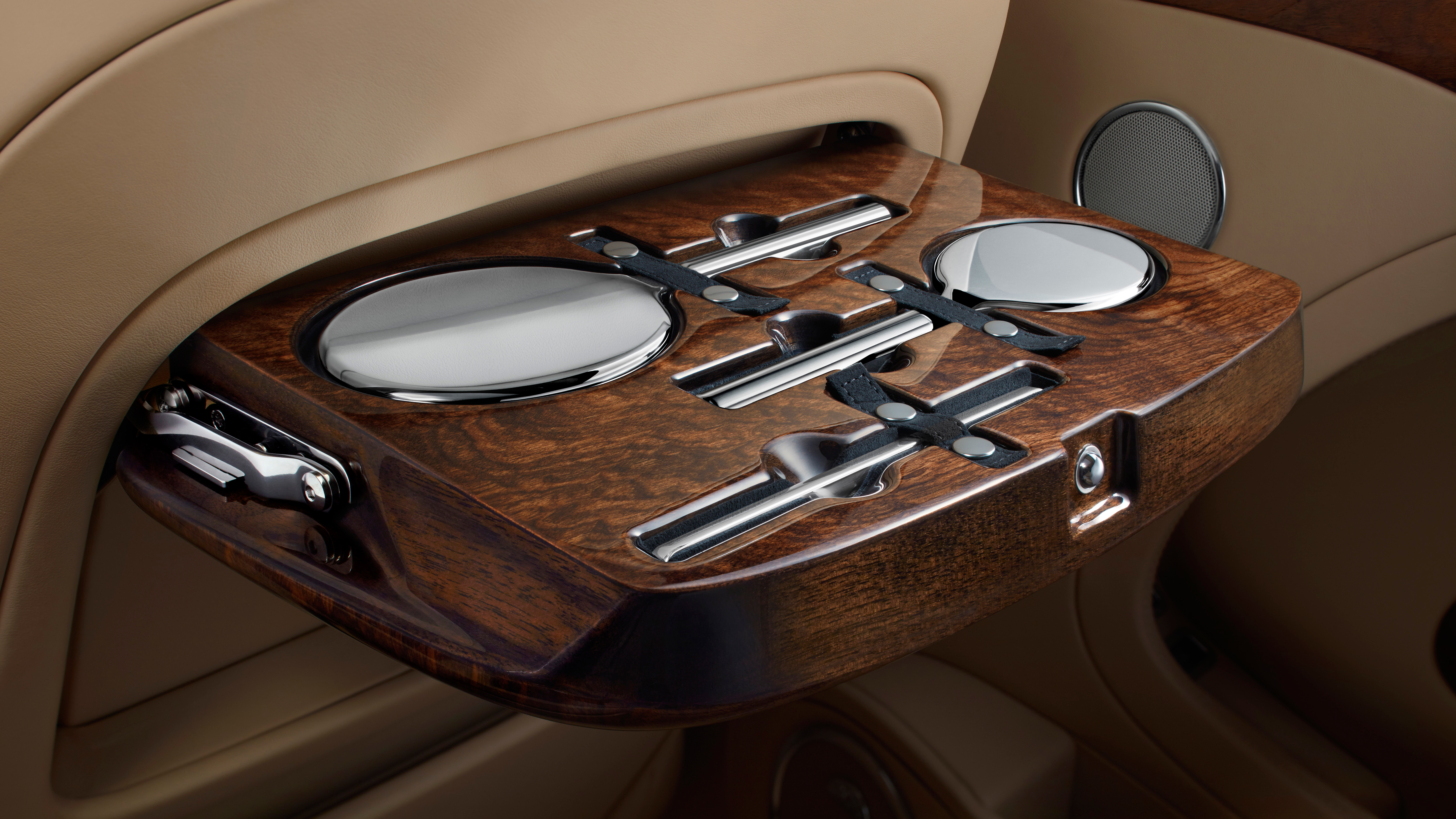
Review: the new 505bhp Bentley Mulsanne
A new Bentley Mulsanne?
Nope, just a refresh and a few model designation changes. We’ve now got the Mulsanne, the Mulsanne Speed and the Mulsanne Extended Wheelbase. All very reasonable - those translate to standard, fast and triple XL variants, all with the same casual attitude to posh deforestation and bovine genocide. Beautiful wood and buttery leather are not in short supply in here - and they smell delicious.
So what’s new? I spy a grille...
Yup, you may have noticed that rather, um, shiny new front portcullis. A vertically-vaned, stainless steel mouth that’s 80mm wider than before, because obviously the old one was way too restrained. The headlights are now flush-mounted either side, with the smaller indicator/DRL/headlamp washer units levelled off horizontally in line - the old Mulsanne got slightly droopy secondary units, which made it look a bit sad/stupid/gormless. The front wings are superformed aluminium, beautifully textured and seamless (excellent lines here), and they bleed into a wider-looking front bumper. It’s an imposing front end, to say the least. The rear gets a similar treatment, with a new, wider and lower bumper and new taillights that include a ‘B’ motif - reversed either side, obviously. In fact, the whole B-for-Bentley thing is reprised in the lower front bumper and the side vents. Bit try-hard for our tastes, but hey ho.
You can tell the big EWB - without seeing them side-by-side it’s remarkably difficult - by the broken swage line across the top of the rear arch, because the standard and Speed have a continuous strake. Speed also gets dark-tinted brightwork, a rifled exhaust and five-spoke alloys.
Anything new under the bonnet?
Nope. But that’s not a bad thing for what is fast becoming something of an old-school standout. It’s a six-and-three-quarter (Bentley-speak), twin turbo V8 producing 505bhp and 752lb ft of torque via an eight-speed auto through the rear wheels only. That means a near 2.7-tonne barge that can get to 62mph in 5.1 and on to a top speed of 184mph. Just for reference, the EWB is a smidge slower to 62mph (5.5), with the same terminal velocity, and the Speed gets a power hike to 530bhp and 811lb ft, meaning that it hits the benchmark in a faintly ridiculous 4.9, with a 190mph top end.
It works, too - we managed 178mph and still pulling in the standard car on the German autobahn, and the car was so unstressed and stable, it felt like it could go all day. But we’d have run out of petrol in about twenty minutes: even with cylinder de-activation (the V8 runs as a four-pot under light loads), this is not a frugal motor.
What’s it like to drive?
Imperious. Near silent. Remarkably chuckable. Four modes from the Drive Dynamics Control, as ever in this sort of thing: Bentley, Sport, Comfort and Custom. Bentley being a suggested compromise, Sport being a little firmer and more direct, comfort being maximum squidge and custom as it might suggest. The steering is really remarkably accurate for a car of this size, and once you’re used to it, the Mulsanne is actually very fast through bends - it’s not just a dragster. Yes, there’s a fair amount of tyre-howl when you start to push, but it’ll surprise a few things. And the optional carbon ceramics are, for once, a must - this is a fair amount of dense marquetry to slow down from 150mph+, so big, fade-free brakes would definitely be on the shopping list.
Top Gear
Newsletter
Thank you for subscribing to our newsletter. Look out for your regular round-up of news, reviews and offers in your inbox.
Get all the latest news, reviews and exclusives, direct to your inbox.
The control and quiet is the most impressive thing, though. New Mulsanne gets anti-vibratory suspension bushings, foam inserts in the tyres (worth 4dB of noise suppression apparently) and active engine mounts. Match that with standard-fit air suspension, and you’ve got a car that does a passable impression of a hovercraft in a vacuum. Not that that would work within the current confines of Newtonian physics, but you get the idea.
It it posh inside?
Just a bit. The stats are frightening if you’re a company accountant: a 400-hour production journey from start to finish, 5,800 hand welds, 120 individual processes just to paint the body (including a 12-hr polish with a lambswool buffer), fluted or quilted seats (hand stitched, obviously), 40 separate veneer pieces (and you can have stone veneers too, if you wish), all mirror matched and stuck together by proper craftspeople who take four years to train.
The EWB takes it to the next level, with 250mm extra leg space, airline style reclining seats, champagne fridges, a pair of tablets that rise electrically from the back of the front seats (though you can have these in the other models, too), and a foldy-out table arrangement that has it’s own suspension and damping system. Seriously, the dampers and springs on the origami-style table look like miniature versions of the stuff you find on high-end motorbikes. It’s all very reassuring.
The order book can be quite complex, too: a choice of 24 different hides with five different colour splits, 12 species of veneer, 100 different exterior colours. A myriad of different internal options - the Mulsanne features all the usual high-end gadgetry, it’s just well hidden - including bespoke crystal flutes for the champagne chiller-thingummy, obviously. Couldn’t do without those. I quite liked the Barnato green car with cognac leather and carbon trim. But what do I know. After that, there’s Mulliner, at which point anything and everything becomes possible.
Would you have one?
Possibly. A Speed in a restrained colour would be one hell of a daily. An expensive, petrol glugging daily that I wouldn’t be able to park in any city on earth, but you’d sure as hell make an impression. And with the Rolls Royce Phantom on its way out - new one due in 18 months - there’s a definite niche to exploit with the EWB. Saying that, there’s just something deeply encouraging about a Bentley Mulsanne. They’re big, and posh, and traditional-feeling. But they’re also lightly surprising and pleasingly modern when you dig deeper. Be glad they exist.
Price: £252,000 (without options)
Engine: 6752cc, V8 twin-turbo petrol
Power: 505bhp @4,000rpm Torque 752lb ft @ 1,750rpm
Efficiency: 19.3mpg (combined); CO2 342g/km
Performance: 0-62mph 5.1sec, top speed 184mph
Powertrain: 8-spd automatic, rear-wheel drive
Kerb weight: 2685kg
You don't want to like it. But you do.
Featured

Trending this week
- Car Review
BMW iX3






